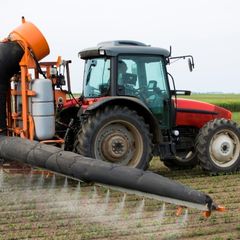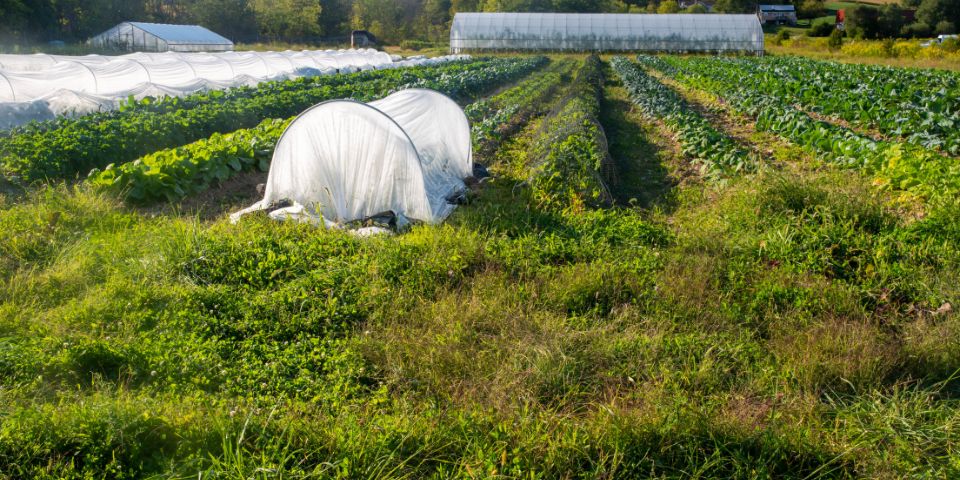“No-till” gardening isn’t a newfangled concept. It’s literally as old as human civilization. Think about it – ancient gardeners couldn’t really pull out their till or plow to break up the soil and roots. If you’re considering no-till for your garden, you’ve got centuries of history backing you up. Humans were able to grow this way for a long time, especially when they were growing on a smaller scale to feed their families. Today, some gardeners (and soil scientists!) are beginning to think that it’s time to go back to this seemingly old-fashioned way of growing.

As humans created new tools to help us garden and farm, we got creative. We love to come up with interesting inventions to save ourselves energy, and the tiller seems to be just that. It breaks up the soil and roots of plants into soft, usable chunks that seem perfect for growing in. But in practice, tilling – especially when done in large scale – can be devastating to soil quality and lead to erosion, nutrient loss, and in worst case scenarios, widespread famine. This is not an exaggeration: the Dust Bowl of the 1930s had many factors, but one of the most important was mechanized farming that plowed up American prairies. Without the deep roots of prairie grasses holding the soil together and helping to retain water, the exposed soil had no defense against the drought and high winds that resulted in the mass erosion and loss of soil quality in our nation’s bread basket.
We’ve learned a lot about soil science since the 1930s, and we’re slowly beginning to realize just how much we have to gain by returning to our roots – pun intended – and incorporating no-till and low-till techniques whenever possible. Let’s look at exactly what’s involved with no-till, low till, and till techniques so that the concept makes more sense.
Tilling: the Conventional Approach
You probably know about tilling (or tillage), so let’s start there. Tilling is simply the process of breaking up the soil with heavy machinery like rototillers or plows. Machines with strong metal attachments dig up soil and roots and turn them over, adding in air – much like a food processor chunks up your favorite salsa. Sometimes this is done together with fertilizers or other soil additives to improve the soil quality. The benefits are obvious: new annual crops can easily establish within this softened soil, and their roots benefit from the lack of competition. If the soil was heavily compacted or poor quality, tilling is a quick short-term fix that can be very appealing.
However, the downsides of this conventional farming technique are becoming apparent. Soil quality in areas that have been over-tilled is much worse. Soil is a living ecosystem, and without roots holding everything together, that system can fall apart. The tiny inhabitants of the soil, from the fungi that live along the root system to the microorganisms and insects that help keep the soil aerated and healthy, cannot survive repeated disruption and application of chemical fertilizers. Tilling can become a cycle as soil loss and nutrient depletion lead to more tilling and fertilizer in an attempt to “fix” the problem. Once good topsoil is gone, it’s hard to replace – that’s the hard lesson of the Dust Bowl.
Industrial No-Till Farming

After the devastation of the Dust Bowl, no-till farming became appealing as farmers tried to figure out ways to retain and rebuild soil. Zero tillage farming especially picked up after broadleaf herbicides were introduced after World War II. These chemicals would kill weeds or cover crops in place, leaving the root systems intact but removing competition for nutrients. This had some real advantages for mass-scale growers. As technology advanced, crops were introduced that were resistant to herbicides (for example, Round-Up ready GMO seeds). As you can imagine, this method isn’t quite as beneficial for the soil as a more sustainable approach like we’ve introduced to you. It does address erosion, but the vibrant, rich ecosystem is still disrupted by the application of these herbicides, which also can harm the insects that pollinate the plants. This is one reason you’ll see some people objecting to the very concept of no-till farming.
No-Till Planting: Rethinking the Problem
Luckily for the home gardener (and large-scale farmers, too), no-till can be done much more sustainably, without resorting to spraying chemicals to kill off a cover crop or weeds. You absolutely do not have to rely on herbicides, GMOs, or other tools of the modern agricultural industrial complex to make it work for you. Instead, rethink your approach, starting from the ground up. A rich, vibrant garden starts with healthy, nutrient-rich soil that is teeming with life of all sorts – including a network of living roots that improve soil texture and prevent erosion. This understanding means you’re zeroing in on most important factors that will allow your garden to be more sustainable and has improved resilience to disease, drought, excessive rain, climate change, and other factors that cause failures on any scale of gardening.

No-till planting starts with prepping your soil with organic materials like compost or leaf mold. You’ll have to directly drill into the ground to either plant your seeds or your transplants, which isn’t too hard once you have the right tools and your soil is ready. Companion planting, intercropping, and cover crops use other plants to keep the soil active, covered, healthy so your crops thrive. After the initial setup, no-till gardens should require less watering, weeding, amendments, and yearly hassle than conventional gardens.
Low-Till or Minimum-Till Approaches
To be fair, changing the way you farm or garden can seem pretty daunting. Moving to No-Till doesn’t have to be an all-or-nothing proposition. If the soil is excessively compacted or weedy, sometimes a compromise works best: low-till or minimum-till uses tilling as needed. Renting or borrowing a tiller on an as-needed basis can get you past those hurdles if they’re too great. Even considering soil health and deciding on a case-by-case basis whether or not tilling is required is a step towards more sustainable gardening.
Keep Reading
This topic is a rich one, so there's more to learn. If you want to know what's in it for you, start by learning the benefits of no-till gardening. Already convinced and want to get started? A Practical Guide to No-Till Gardening will help give you a path ahead. If you're like me, once you've started with no-till, you'll never look back.
Written by Teresa C., Zone 8a, Alabama

Some images provided by Wikimedia Commons, public domain























